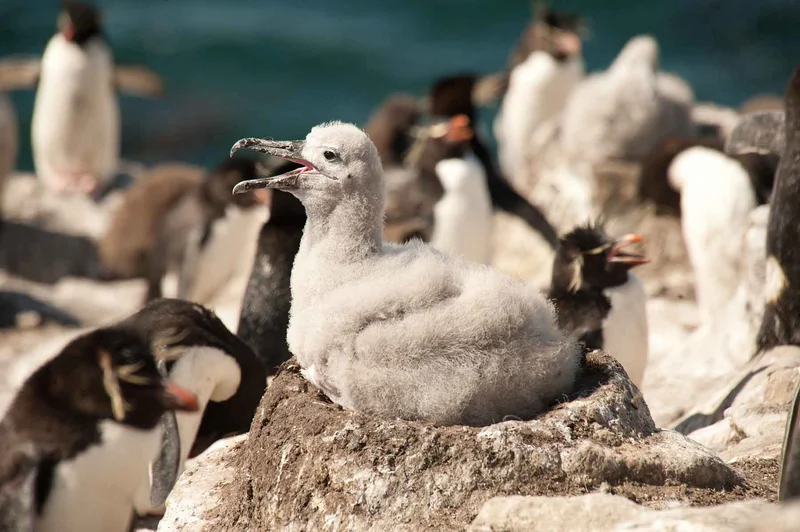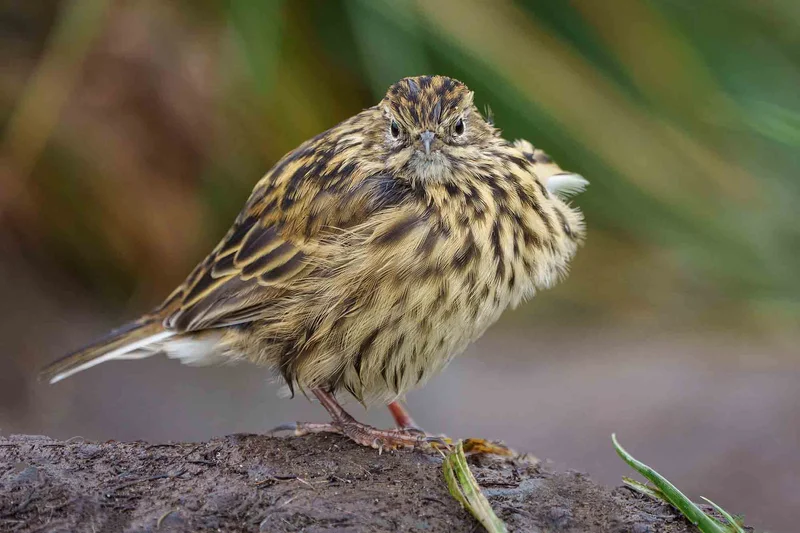
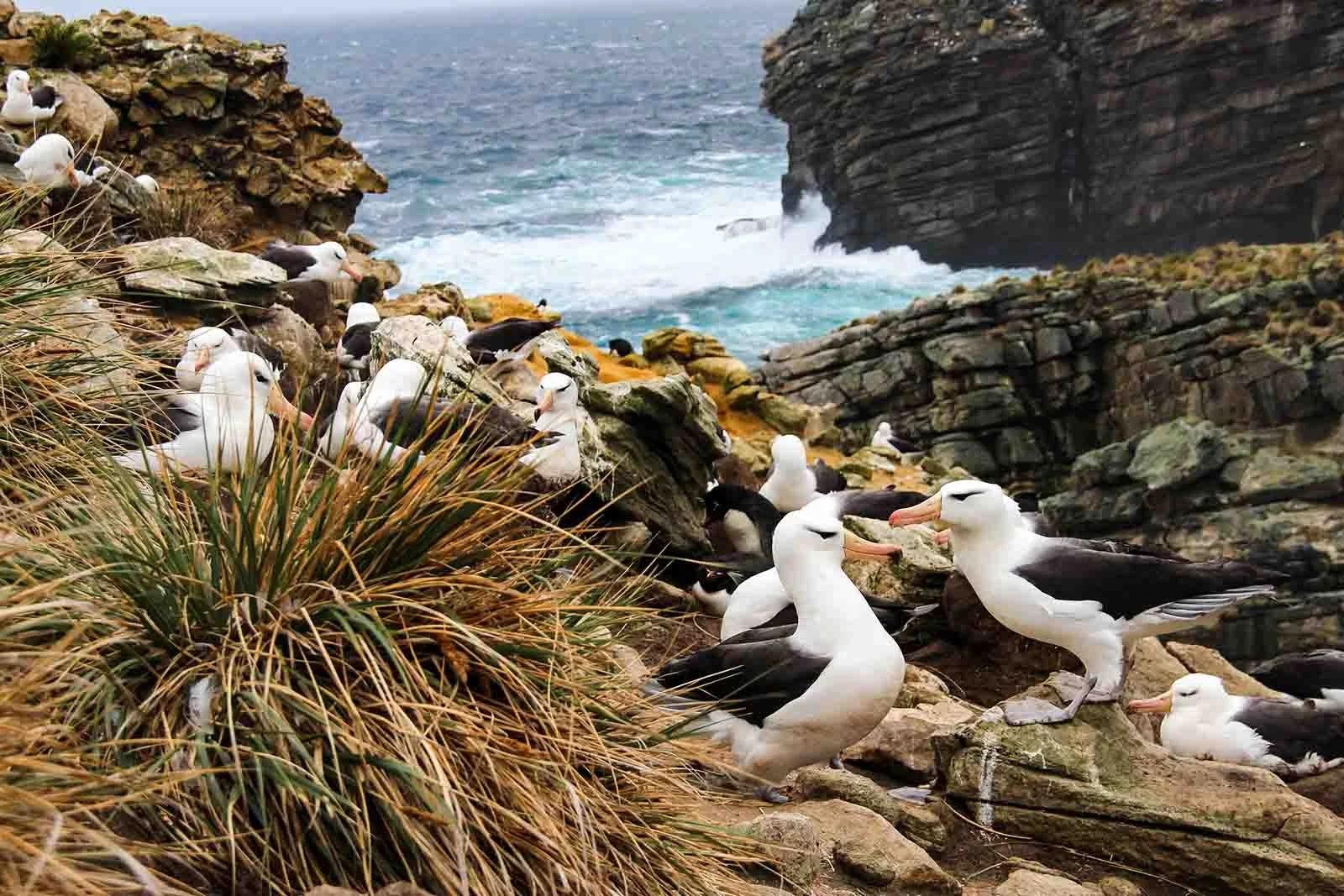
20 Day Antarctica Itinerary
Day 1: Arrive in Ushuaia, Argentina
Day 2: Embarkation Day
Day 3: At Sea
Day 4 & 5: Falkland Islands (Islas Malvinas)
Upon your arrival in the Falklands (Malvinas), your camera will get its first real workout capturing the abundant wildlife and rugged feel of this sub-Antarctic region. The archipelago contains two main islands, East Falkland and West Falkland, which you will explore during daily excursions.
Stanley, also known as Port Stanley, is often a favored landing site, as the town offers a unique British outpost feel, complete with eclectic charm. You’ll be free to explore, grab a pint at the local pub or visit the cathedral and museum.
In terms of wildlife, the archipelago is home to Magellanic, gentoo and southern rockhopper penguins. If you’re lucky, you may even spot king penguins here as well! You can expect to see black browed albatross, plus two endemic bird species—the flightless Falkland steamer duck and possibly the elusive Cobb’s wren.
Your expert education team will be sure to enrich your understanding of the local flora and fauna, making the most out of your time in the Falklands.
Day 6 & 7: At Sea
Day 8 to 11: South Georgia
This remote, mountainous island was a popular stop for many historic Antarctic expeditions and was once a haven for hunting whales and seals. Today, island wildlife populations are rebounding, but you’ll still see remnants of old whaling stations and other abandoned outposts.
One significant and historic site is the grave of the great explorer Sir Ernest Shackleton. You can visit his grave at the settlement of Grytviken, which is also home to an old whaling station, plus a museum, gift shop, church and small research station.
Although South Georgia’s history is an important attraction to the island, its incredible densities of wildlife make it truly memorable. Each landing you make on South Georgia, often referred to as the Galapagos of the Poles, will open your eyes to the wondrous lives of new, enthralling creatures.
One day you may see colonies with hundreds of thousands of pairs of king penguins waddling on a beach, and the next, you may visit another beach blanketed with hundreds of fur or elephant seals. The grasses, mountains and beaches of South Georgia all play an important role in the breeding and survival of different species on the island. This fragile and interwoven relationship is something your Expedition Team will instill in you during your time here.
Day 12 & 13: At Sea
Day 14 to 17: South Shetland Islands and Antarctic Peninsula
The most common reaction upon reaching the White Continent is a sense of reverence and awe. The experience is beyond words, since few places are as untouched and enduring as Antarctica. You will discover that Antarctica is a land of extremes. At one moment you’ll be overcome with a feeling of complete isolation and silence, and at the next moment you’ll be inspired by nature as a calving glacier crashes into a brilliant blue sea or a penguin waddles by to inspect your footwear.
Your Expedition Team will take care of you at each excursion, whether you are Zodiac cruising, visiting a historical site or consorting with penguin colonies. Chinstrap, Adélie and gentoo penguins are found here, along with Weddell, fur, crabeater and leopard seals. During Zodiac cruises, keep an eye out for Antarctic whales such as minkes, as you may get a chance for an intimate experience with these majestic animals. Each day and each excursion will present a new collection of creatures to entertain
you and keep your camera busy.
As exciting as the Zodiac excursions and landings areas, perhaps you’ll treat yourself to an extra-special Antarctic experience by partaking in an optional paddling excursion (at an extra cost) or cast reason aside and jump into Antarctic waters for the Polar Plunge!
Day 18 & 19: Crossing the Drake Passage
Day 20: Disembarkation in Ushuaia

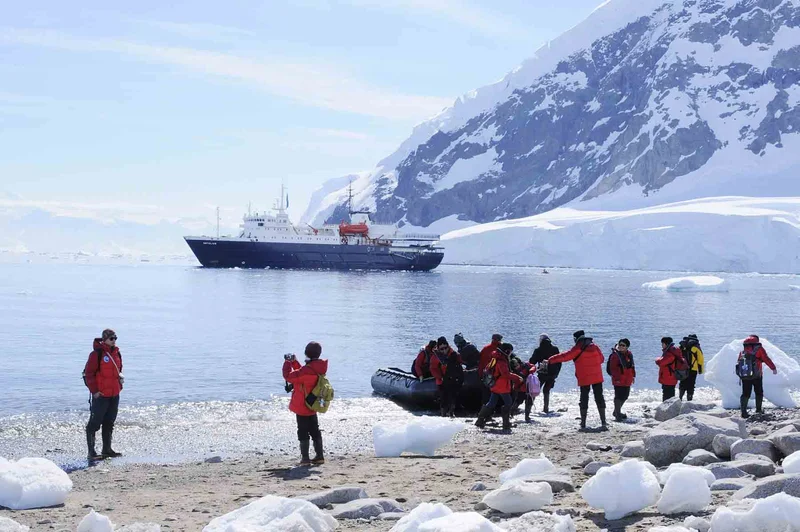
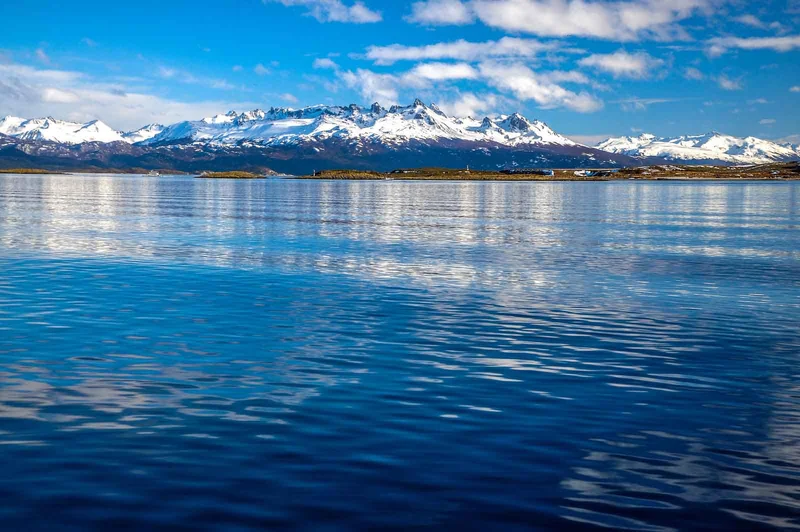
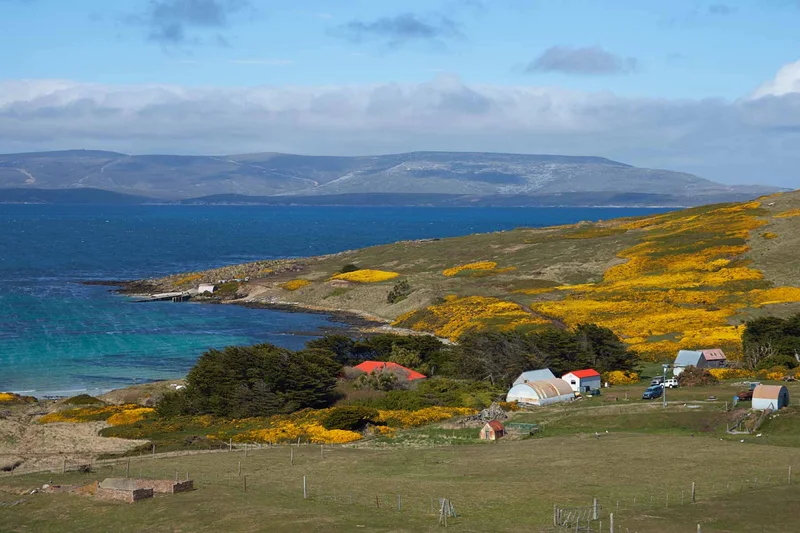
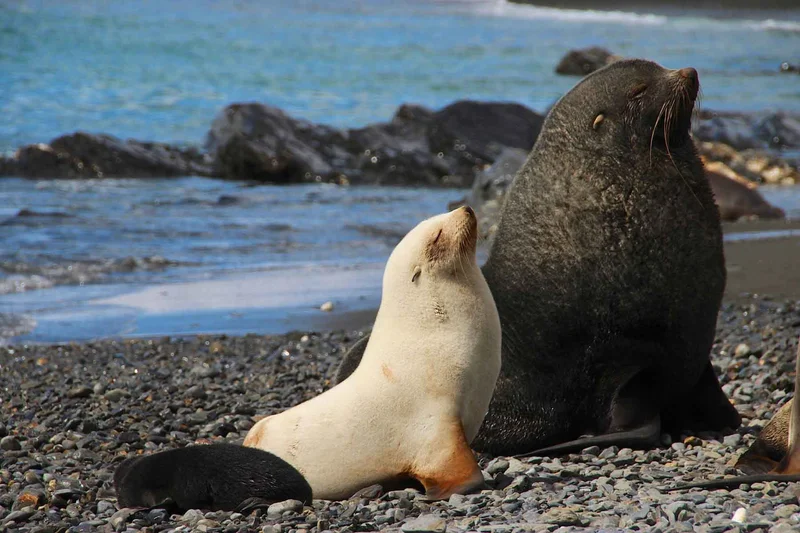
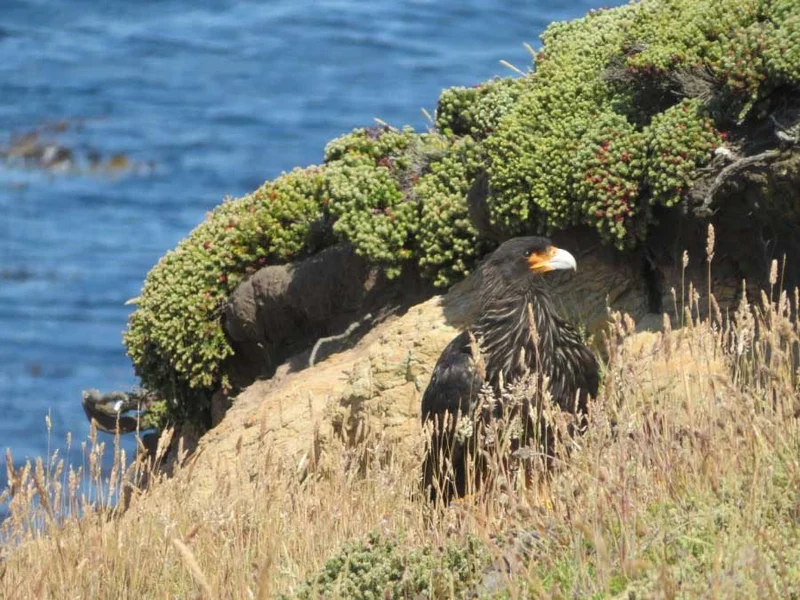

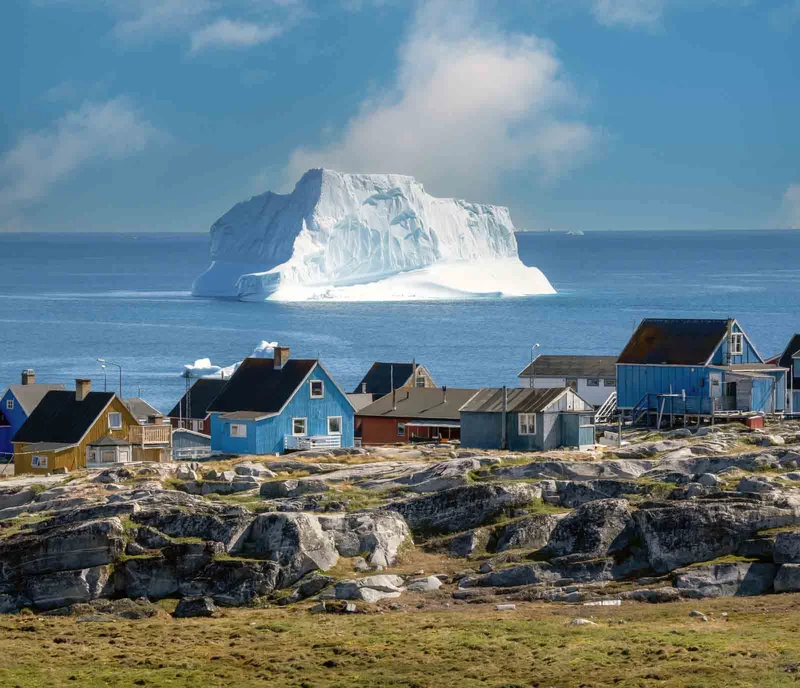

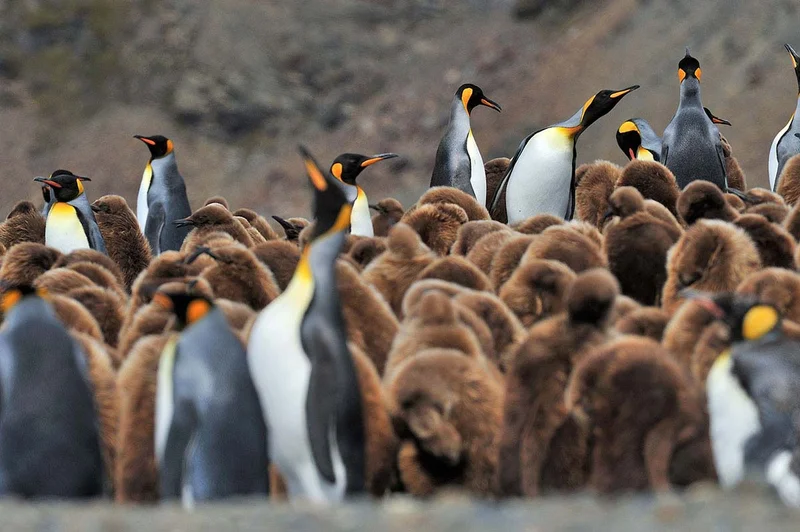
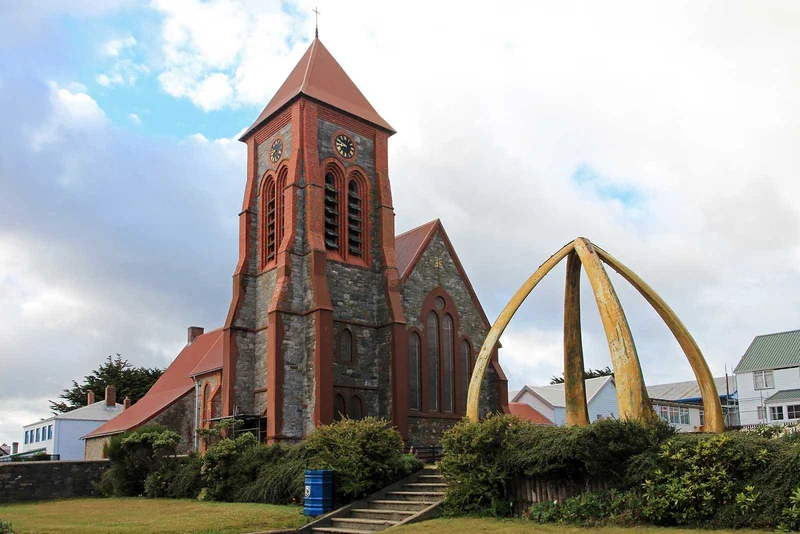

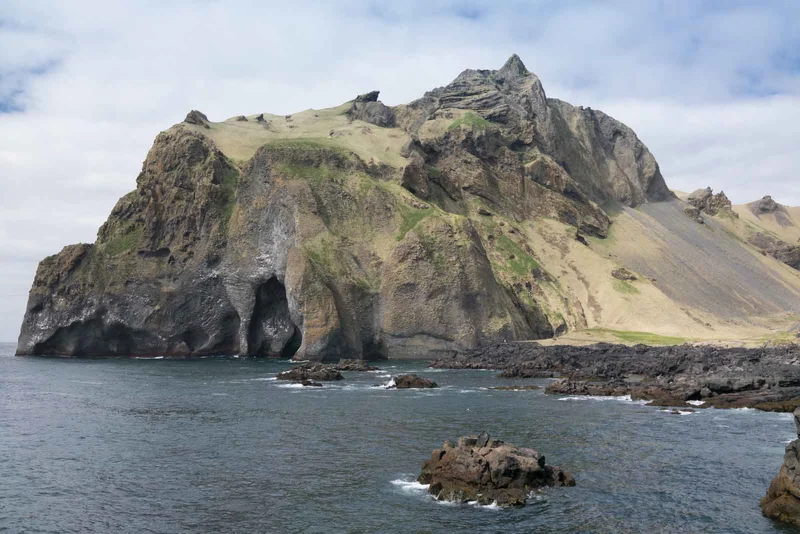


20 Day Antarctica Itinerary Includes
- Leadership throughout the voyage by our experienced Expedition Team, including shore landings and other activities
- All Zodiac transfers and cruising as per the daily program
- All shore landings as per the daily program
- Shipboard accommodation with daily housekeeping
- All meals, snacks, soft drinks and juices on board throughout your voyage (Please inform us of any dietary requirements as far in advance as possible. Unfortunately, the ships’ galleys cannot prepare kosher meals.)
- Select beer and wine during dinner; and coffee, tea and cocoa available around the clock
- Formal and informal presentations by our Expedition Team and guest speakers as scheduled
- A photographic journal documenting the expedition
- A pair of waterproof expedition boots on loan for landings and Zodiac cruising excursions
- An official Quark Expeditions parka to keep
- Hair dryer and bathrobes in every cabin
- All miscellaneous service taxes and port charges throughout the program
- All luggage handling aboard the ship
- Emergency Evacuation insurance for all passengers to a maximum benefit of USD $ 500 , 000 per person
- Group transfer from hotel to ship on embarkation day
- Group departure transfer upon disembarkation from ship to local airport or to luggage storage facility
20 Day Antarctica Itinerary Does not Include
- International airfare
- Passport and applicable visa expenses
- Government arrival and departure taxes not mentioned
- Meals unless otherwise specified
- Baggage, cancellation, interruption and medical travel insurance strongly recommended
- Excess-baggage fees on international and domestic flights
- Mandatory waterproof pants for Zodiac landing and cruising excursions, or any other gear not mentioned
- Laundry, bar, spa services and other personal charges, unless specified
- Phone and Internet charges (connectivity may vary by location)
- Voluntary gratuity at the end of the voyage for expedition staff and shipboard crew
- Additional overnight accommodation
- Arrival and departure transfers, except where explicitly stated
- Adventure Options not listed in Included Activities
20 Day Antarctica Itinerary Highlights
- Learn about the local flora and fauna
- You’ll be inspired by nature as a calving glacier crashes into a brilliant blue sea or a penguin waddles by to inspect your footwear
- Amazing zodiac excursions and landings areas.
Itinerary Map
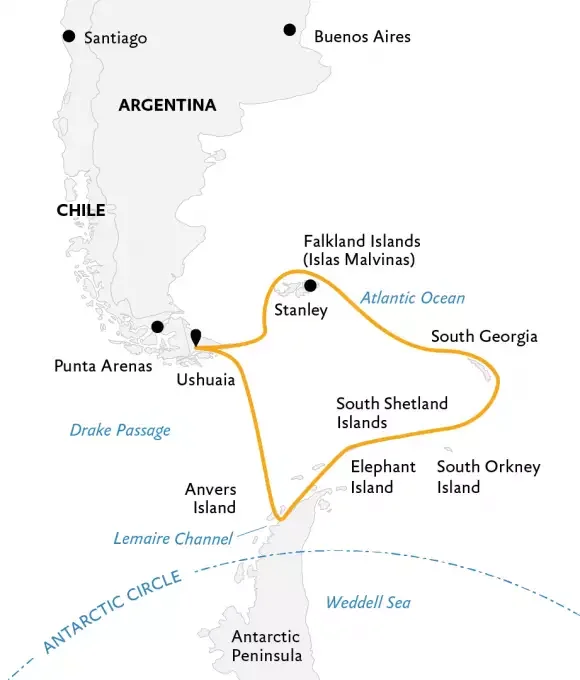
Cruise options for this itinerary
20 Day Antarctica cruise activities


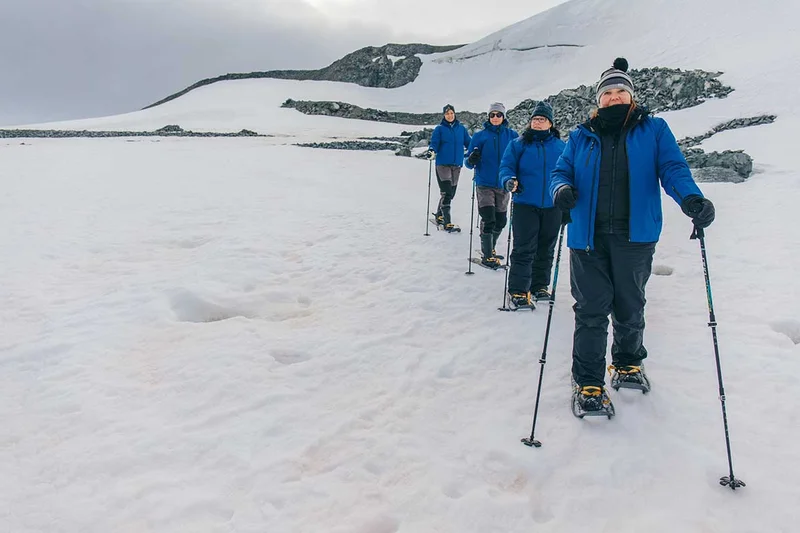
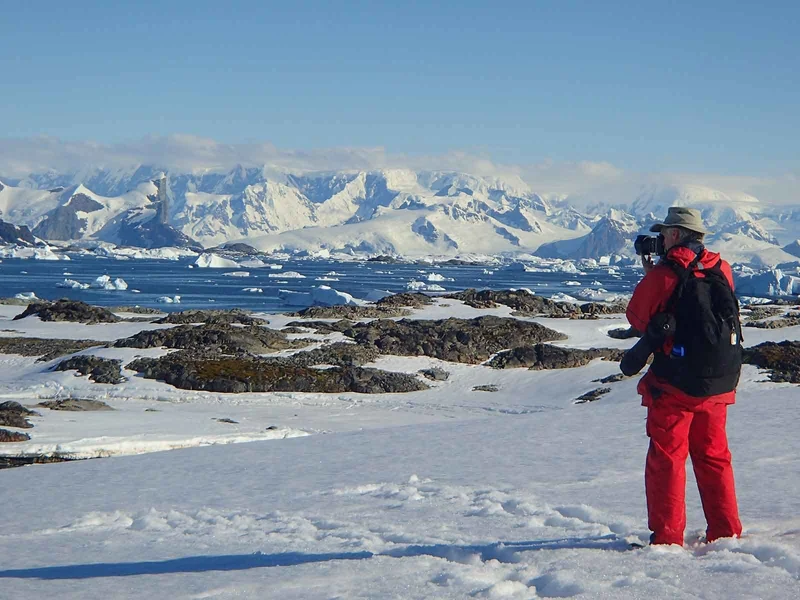
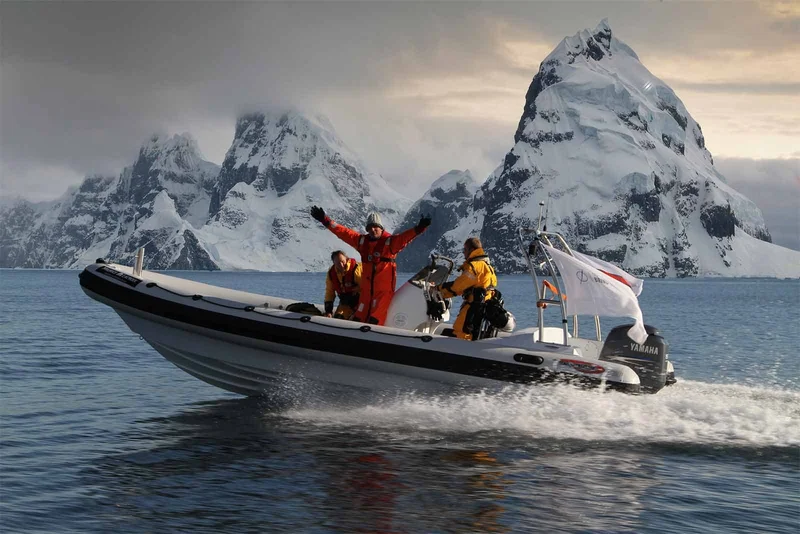

Animals you might see on this itinerary
Why travel with us?
Would you like to know why booking with us is the best choice?
Discover the BenefitsSimilar Itineraries


